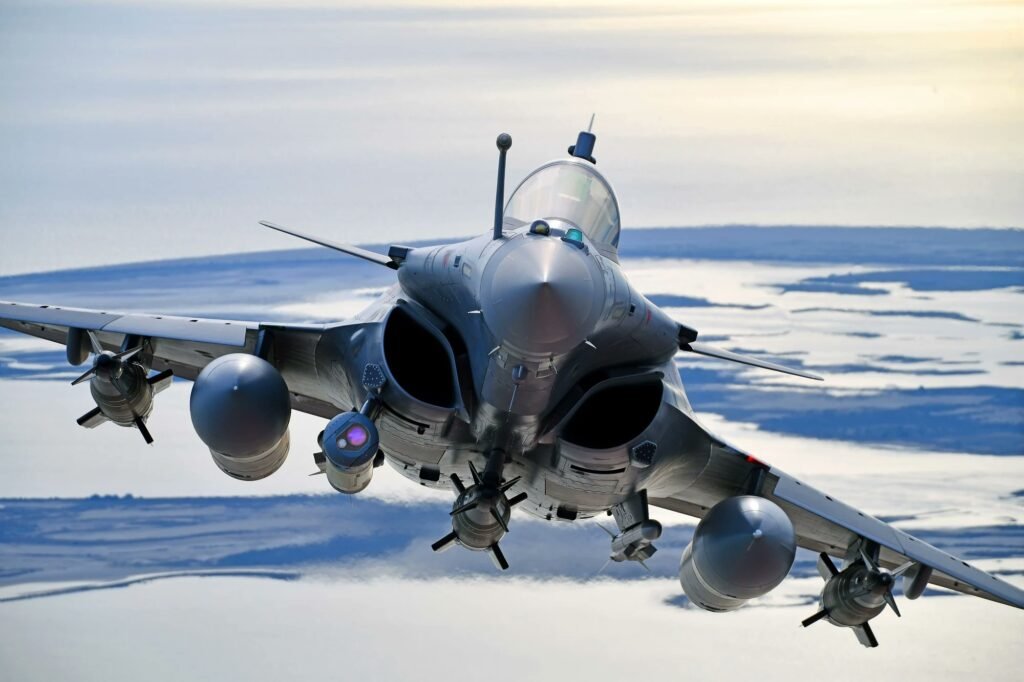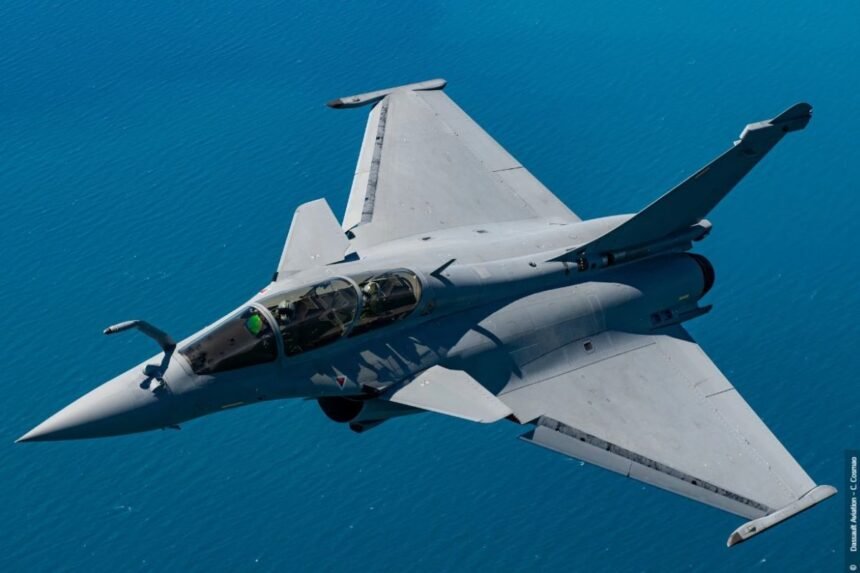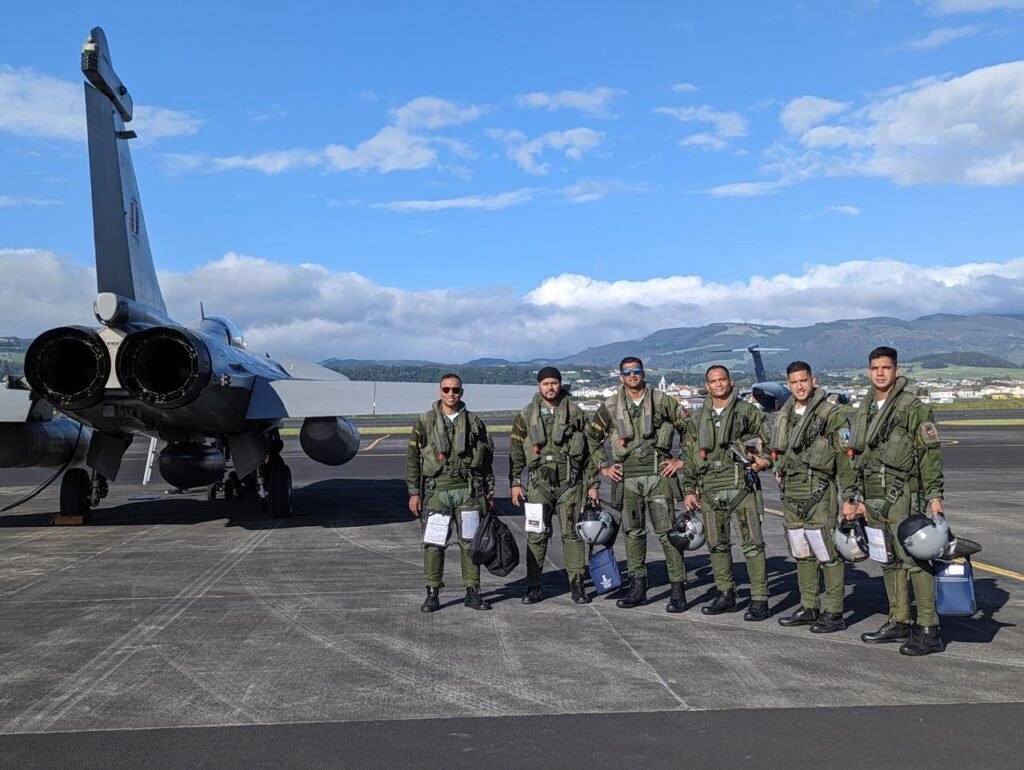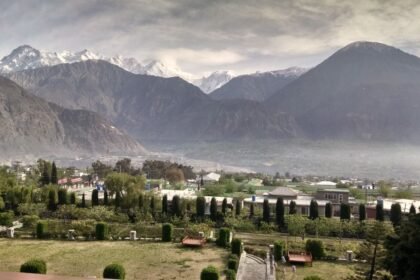In July 2020, as five Dassault Rafales screamed across the Indian skies from France to Ambala,
they weren’t just fighters arriving,they were signals. From New Delhi to Beijing to Islamabad, a
clear message was broadcast: the Indian Air Force had just plugged a decades-long capability
gap. And while headlines screamed triumph, adversaries quietly recalculated. But was this jet
truly a strategic game-changer or just a well-packaged political win?
- BACKGROUND
- ANALYSIS: Why the Rafale Disrupts the Balance
- OSINT Insight:-
- PR VS PRACTICALITY: The Real vs the Rhetoric
- GLOBAL RELEVANCE
- Comparative Table: Rafale vs Rivals
- GLOBAL TAKEAWAY: How Rafale Rewrites Airpower Thinking Beyond South Asia
- What Makes It Globally Relevant:
- Analyst Insight: Why Rafale’s Value Can’t Be Counted in Numbers Alone
- CONCLUSION
BACKGROUND
India’s pursuit of a Medium Multi-Role Combat Aircraft (MMRCA) began in 2007. The IAF evaluated six global contenders—from the Eurofighter Typhoon to the American F/A-18 Super Hornet. In 2012, the Rafale won based on its operational versatility, superior avionics, and long-range precision. What followed was turbulence: collapsed negotiations, political controversy, and finally, a government-to-government deal in 2016—36 Rafales for €7.87 billion. While opponents cried foul over price opacity, strategic thinkers knew: India was buying not just jets, but a doctrine-altering edge. Behind the decade-long delay lay two factors often overlooked: India’s insistence on sovereign customizations and the global shift in warfare doctrine post-2014. When negotiations resumed under a G2G format, India demanded specific adaptations-from cold-start takeoff capability in Himalayan terrain to Israeli helmet-mounted sights and encrypted Identification Friend or Foe (IFF) systems. These Rafales weren’t off-the-shelf-they were precision-configured platforms for India’s twin-front contingency.
ANALYSIS: Why the Rafale Disrupts the Balance

🔸 Technological Edge
- RBE2 AESA Radar: Tracks 40 targets simultaneously; 100+ km air-to-air lock-on range.
- SPECTRA EW Suite: Counter radar locks, jamming, decoy deployment Rafale survives
in contested skies. - Meteor BVR Missile: With a 150+ km range and a no-escape zone wider than anything
in the region, it outranges China’s PL-15 and Pakistan’s AIM-120C.
🔸 Multirole Versatility
- Deep strike (SCALP cruise missile), maritime attack (AM39 Exocet), air superiority, and
close air support. - Operable from high-altitude airbases like Leh, where Su-30s suffer from degraded
engine performance.
OSINT Insight:-
Rafales have regularly flown combat air patrols over Ladakh, confirmed via satellite imagery and ADS-B data between July 2020–2021 projecting power near Chinese flashpoints.
🔸 Strategic Doctrine Shift – From Reactive to Proactive The Rafale marks a pivot in India’s air doctrine. Traditionally, the IAF followed a “reactive air defence” posture. With Rafale’s Meteor and SCALP, India now possesses credible “Offensive Counter Air (OCA)” capabilities for preemptive strikes on enemy infrastructure and runways before a single hostile sortie is airborne.
🔸 Real-World Strike Simulation– SCALP Missile Use Case A Rafale armed with SCALP missiles, launched from Gwalior or Ambala, can strike deep into Pakistani territory at Sargodha airbase or even Rawalpindi’s C4ISR hubs without crossing Indian airspace. These profiles align with India’s evolving limited-war doctrine under nuclear thresholds.
PR VS PRACTICALITY: The Real vs the Rhetoric
When Rajnath Singh tweeted, “A game changer for Indian air power,” critics dismissed it as PR.
But from a capability standpoint, Rafale filled critical gaps:
- IAF lacked Western-origin multi-role fighters.
- Meteor changed BVR engagement rules.
- 60% availability rate > Su-30’s 45–50% in real ops.
Unlike many rapid acquisitions driven by urgency, the Rafale deal with all its delays ultimately delivered a fully combat-configured jet from Day One, not one needing future upgrades or retrofits. This allowed the IAF to operationalize the platform within months of delivery-especially vital during the Ladakh standoff.
Still, limitations exist:
Only 36 jets-not a fleet-transformer alone. No indigenous ToT or ecosystem impact (unlike Tejas program).
Rafale is not just a fighter it’s an assurance. —Air Chief Marshal RKS Bhadauria, 2021
🔸 Speculated Nuclear Delivery Role _Unconfirmed but credible reports suggest Rafale may replace Mirage-2000H in India’s Strategic Forces Command as a nuclear strike platform. With terrain-following precision and survivability, it fits the second-strike profile under India’s NFU doctrine.
“The Rafale introduces a disruptive capability for the IAF. Its standoff weapon loadout, paired with survivability, complicates our own air dominance calculus.”
— Air Commodore (Retd.) Kaiser Tufail, PAF
GLOBAL RELEVANCE
UAE, Egypt, Indonesia also operate Rafale building an Indo-French-aligned network. France’s Indo-Pacific push (Reunion, Djibouti bases) strengthens interoperability with India. Rafale presence forces China to reconsider Tibet deployments and Pakistan to rethink F-16 dependence.
🔸 Tactical Edge Over Tibet- Rafales from Leh or Hasimara can fly terrain-hugging profiles into Aksai Chin using terrain-following radar, staying below radar detection. Chinese bases like Hotan and Ngari at high altitudes suffer operational handicaps. Rafale, meanwhile, can strike without even crossing the LAC.
🔸 Naval Interoperability: Rafale-M for INS Vikrant India’s planned acquisition of 26 Rafale-M fighters for the Navy means IAF and INS Vikrant will share the same platform, a rare case of inter-service airpower synergy. This allows joint training, spare pooling, and common mission planning, unlike most Asian rivals.
Comparative Table: Rafale vs Rivals
| Feature | Rafale (India) | J-10C (China) | F-16 Block 52 (Pakistan) |
|---|---|---|---|
| Radar | RBE2 AESA | KLJ-7A AESA | AN/APG-68(V)9 |
| BVR Missile | Meteor (150+ km) | PL-15 (~130 km est.) | AIM-120C-5 (105–110 km) |
| EW Suite | SPECTRA | Internal ECM (basic) | AN/ALQ (limited) |
| Max Speed | Mach 1.8 | Mach 2.0 | Mach 2.0 |
| Combat Radius | 1,850 km | 1,250 km | 1,500 km |
| Stealth/Survivability | Low RCS + EW + Decoys | Semi-stealth (≥1m² RCS) | No stealth, older ECM |
GLOBAL TAKEAWAY: How Rafale Rewrites Airpower Thinking Beyond South Asia
For many global defense analysts, India’s Rafale deal is no longer just a regional event.it’s a case study in how middle powers are adapting fifth-generation warfighting doctrines without fifth-gen aircraft. While India did not opt for the F-35 or develop its own stealth fighter yet, the Rafale package paired with Meteor, SCALP, and SPECTRA created an “F-4.5” generation force multiplier that blends survivability, multirole adaptability, and doctrinal autonomy.
What Makes It Globally Relevant:
Doctrine Over Design: The IAF redefined deterrence by pairing smart doctrine (deep strike + terrain-following ops) with a 4.5-gen platform, not by relying on stealth alone.
Weapons Over Airframe: Meteor and SCALP missiles shifted the focus from airframe superiority to standoff precision lethality, a model now studied by Egypt, Indonesia, and the UAE.
Interoperability with Global Democracies: Rafale users now include India, France, Greece, the UAE, and Indonesia, creating a latent alignment across NATO and Indo-Pacific theaters. With Rafale’s spread across both NATO and Indo-Pacific corridors, its presence in Indian hands becomes not just a regional balance-changer but a bridge between Western combat standards and Asian threat environments. For countries unable to field 5th-gen fighters, the Indian Rafale doctrine presents a viable template: leap in capability without total platform dependence.
“Rafale in IAF hands is less about the jet and more about what it enables: strategic independence through customized lethality.” — Dr. Vipin Narang, MIT (quoted in War on the Rocks, 2022)
Analyst Insight: Why Rafale’s Value Can’t Be Counted in Numbers Alone
The Rafale’s power lies not in fleet size, but in what it enables. Even with just 36 units, the IAF shifted its air posture from reactive to preemptive. It gave India the capability to enforce deterrence-by-denial, hitting adversary bases before hostile aircraft can scramble.
In strategic terms, that’s not an upgrade. It’s a paradigm shift. With Rafale’s spread across both NATO and Indo-Pacific corridors, its presence in Indian hands becomes not just a regional balance-changer but a bridge between Western combat standards and Asian threat environments. India’s Rafale story isn’t about platform parity—it’s about doctrine depth. And that’s a playbook other democracies are now watching closely.
CONCLUSION
Rafale didn’t just enter Indian service,it redefined air dominance in a region long dictated by numbers and legacy systems. It brought a kill-from-distance doctrine, unmatched electronic survivability, and the power to strike without warning. Yes, the media storm exaggerated its role. No, 36 aircraft won’t transform the IAF alone. But for India’s two-front planning, it closes dangerous gaps. And for adversaries used to air superiority or standoff sanctuary.it changes the equation entirely. PR win? Certainly. But more importantly a calibrated leap into 21st-century air warfare.
References:
- Dassault Aviation Official Specs
- Indian Air Force Annual Reports 2021, 2023
- “Air Chief Marshal RKS Bhadauria on Rafale induction” , Press Conference July 2020
- SIPRI Arms Transfers Database
- ORF: “Air Power in Two-Front Scenarios” (2021)
- War on the Rocks, “Meteor Missile: The BVR Game-Changer in Asia”
- Satellite Imagery: SentinelHub, RadarBox, LiveUA OSINT (2020–2022)
- Naval News 2024 – Rafale-M Acquisition
- Interviews and blogs of Air Cdre (Retd.) Kaiser Tufail (PAF)
- L’Opinion France, Bharat Karnad (Nuclear Role Commentary)
- War on the Rocks: “How India’s Rafale Deal Influences Middle Power Air Strategy”
- NATO Defence College (Brief 2023): “Emerging Airpower Trends in the Indo-Pacific”
- IISS Military Balance 2023–24





